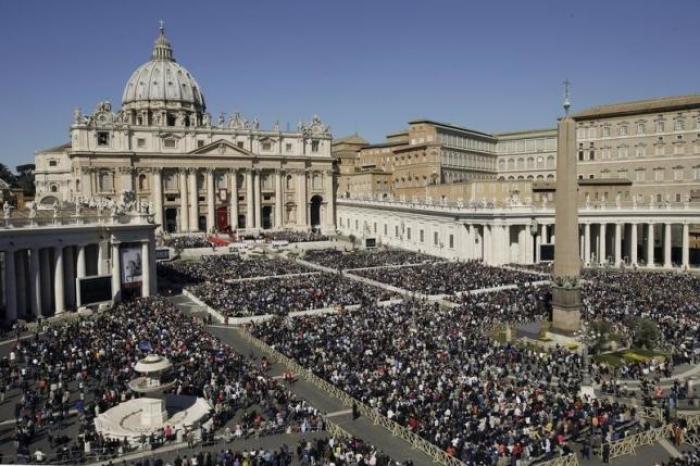Bones Belonging to St. Peter, One of Jesus' Apostles, Allegedly Uncovered at 1,000-Y-O Roman Church

Bones that allegedly belong to St. Peter, one of Jesus Christ's apostles, who is also considered by Roman Catholics to be the first pope, have been uncovered at a 1,000-year-old church in Rome.
The Telegraph reported on Monday that a worker found the bones inside clay pots at the Church of Santa Maria in Cappella in the district of Trastevere.
The pots were apparently buried beneath a large marble slab near the medieval altar of the church, which has been closed for 35 years due to damage.
"There were two clay pots which were inscribed with the names of early popes – Peter, Felix, Callixtus and Cornelius. I'm not an archaeologist but I understood immediately that they were very old," the workman told Rai Uno, an Italian television channel. "Looking at them, I felt very emotional."
Peter is known for having denied Christ three times in the Bible, before repenting, and later on being crucified upside down in Rome in the first century as a Christian martyr.
The Vatican said that it will wait for a DNA comparison between the newly discovered relics and other bones of St. Peter under its care before it comments on the issue.
The Telegraph suggested that the reason the bones may have been kept at the Santa Maria church is due to internal power struggles in the Catholic Church during Pope Urban II's reign in the 11th century.
"While Urban was generally recognized as the legitimate pope, he faced a challenge from an anti-pope, Clement III, who had set up a rival power base in Rome, backed by the Holy Roman Emperor Henry IV," the article stated.
"The church in Trastevere was closely linked to Pope Urban and may have been seen by him as a secure place in which to hide the bones."
Pope Francis publicly unveiled other bone fragments believed to belong to Peter back in 2013, which were forensically examined in the 1960s and showed that they came from a man in his early sixties who lived in the first century.
Those remains are believed to have been interred in a tomb on Vatican Hill following Peter's death, with St. Peter's Basilica eventually being built over it.
Excavations following World War II under the basilica found a funerary monument with a casket built in honor of Peter and a Greek engraving reading "Peter is here," which contained the relics.
A team of archaeologists announced in August that they may have found Peter's home in a lost Roman imperial city off of the Sea of Galilee, where the apostles Philip and Andrew also lived.
The Kinneret College researchers said at the time that the city of Julias was built as part of the town of Bethsaida, mentioned in John 1:44 as the hometown of the three apostles.
Haaretz cautioned that there are "three candidates for Julias," however, including two earlier discovered sites by Galilee.




























